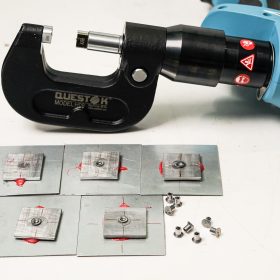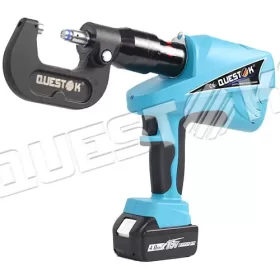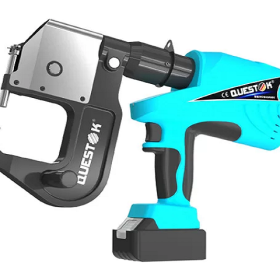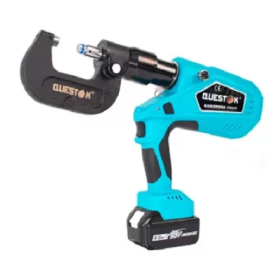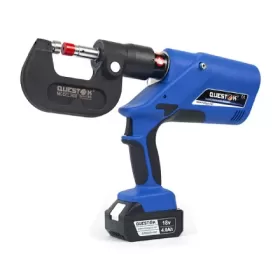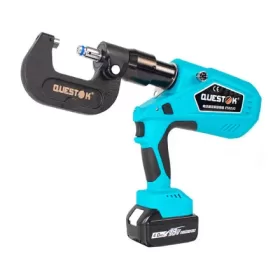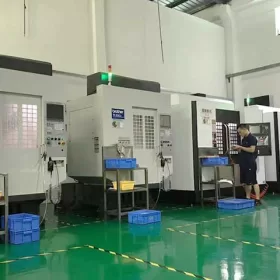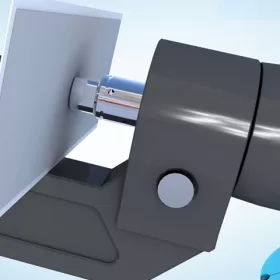Building Connections- How Rivet Gun Parts Work Together for Fastening
Building Connections: Unveiling the Interplay of Rivet Gun Components for Secure Fastening
From intricate aircraft assemblies to robust construction projects, rivets are the indispensable fasteners that provide structural integrity and resilience to countless applications. Rivet guns, the tools that drive these rivets, are engineering marvels comprising a network of intricately synchronized components, each playing a vital role in the process of forming secure connections.
Rivet Gun Types: A Spectrum of Solutions
Rivet guns come in various types, each tailored to specific fastening requirements. Manual rivet guns offer a cost-effective option for low-volume applications, while pneumatic rivet guns harness compressed air for effortless and efficient riveting. Electric rivet guns provide a convenient and versatile solution, particularly for overhead or confined space work, and cordless rivet guns bring the added convenience of portability.
Anatomy of a Rivet Gun: A Symphony of Parts
At the heart of every rivet gun lies a carefully orchestrated ensemble of components. The gun body houses the mechanism and serves as the handle for the user. The riveted jaw contains dies that match the shape of the rivet head, forming the connection between the rivet and the workpiece. The trigger activates the riveting process, while the safety mechanism prevents accidental firing. Additional components include the anvil (counteracts the force from the rivet head), mandrel (expands the rivet shank), and waste bin (collects the discarded mandrel).
The Riveting Process: A Step-by-Step Orchestration
1. Positioning: The rivet is inserted into the hole in the workpiece, with the tail end protruding.
2. Compression: The gun body is aligned over the rivet, and the trigger is pulled.
3. Bucking: The driven jaw exerts force on the rivet head, while the anvil supports the opposite end.
4. Expansion: The mandrel expands the rivet shank, forming the head and locking the connection.
5. Separation: After the rivet is completely formed, the gun retracts, and the mandrel is ejected.
Applications of Rivet Guns: A Diverse Landscape
Rivet guns find applications in a vast spectrum of industries, including:
– Aerospace: Fastening aircraft components for superior strength and durability.
– Construction: Securing metal sheets, beams, and trusses in various structures.
– Automotive: Assembling car bodies, exhaust systems, and interior components.
– Appliance Manufacturing: Joining metal parts in refrigerators, stoves, and dishwashers.
– HVAC: Connecting ductwork, registers, and other components in ventilation systems.
Safety Considerations: Ensuring Riveting Integrity
Proper safety precautions are paramount when using rivet guns:
– Wear protective gear: Safety glasses, gloves, and hearing protection are essential.
– Inspect the gun regularly: Ensure the components are in good condition and properly aligned.
– Use the correct rivet: The rivet size and material must match the application requirements.
– Avoid overcrowding rivets: Too many rivets close together can weaken the structure.
– Never overtighten rivets: Excessive force can damage the rivet and surrounding materials.
Conclusion: The Rivet Gun’s Role in Engineering Excellence
Rivet guns, with their intricate symphony of components and diverse applications, epitomize the ingenuity of modern engineering. They provide a reliable, efficient, and versatile means of fastening, enabling the construction of robust and dependable structures across countless industries. By understanding the inner workings of rivet guns and adhering to safety guidelines, professionals can harness their full potential to create secure and long-lasting connections.
- Company News
- Industry News
- Tag
- Tags
-
The Advantages of Questok Rivet Guns: Precision, Efficiency, and Durability
In industrial fastening applications, the choice of tools directly impacts productivity, safety, and long-term cost-effectiveness. Questok rivet guns have emerged as a standout solution for professionals across aerospace, automotive, and construction sectors. Combining advanced engineering with user-centric design, these tools deliver unmatched performance. Below are the key advantages that make Questok rivet guns a preferred choice:
-
Rivet Gun FAQ
Rivet Gun FAQ-SPR
-
Fast Assembly and Repair With Cordless Solid Rivet Gun
Questok cordless solid rivet gun stands out as a pivotal innovation, merging portability with power to facilitate efficient and effective fastening in a myriad of applications.
-
Redifine The Role of Self-piercing Riveting Gun Machine
Self-piercing riveting adopts high-speed mechanical fastening skill that joins thin sheet materials, typically steel and aluminum alloys.
-
The Latest Innovations in Clinching Tool Design
Explore the latest innovations in clinching tool design, redefining precision, efficiency, and versatility in material joining.
-
The Application and Maintenance of Self-Piercing Rivet Guns
Delve into the applications of self-piercing rivet guns in the automotive and aerospace industries and reveal the essential maintenance practices that ensure their accuracy and efficiency.
-
Rivetless Riveting Gun for Ventilation Duct Projects
The ventilation duct rivetless gun is a tool for riveting ventilation ducts without rivets.
-
Guide to Using Self-Piercing SPR Riveting Gun
In the automotive industry, self-piercing SPR (Self-Piercing Rivet) riveting guns are commonly used for joining metal components in vehicle bodies, including BMW vehicles.
-
Rivet Gun FAQ
Rivet Gun FAQ-SPR
-
Versatile Fastening- Applications of the Handheld Rivet Gun Across Industries
In the realm of fastening, the handheld rivet gun stands as a testament to ingenuity and versatility. Its ability to effortlessly join materials with sheer strength and permanence has revolutionized manufacturing and construction processes, leaving an enduring mark on diverse industries. Aerospace: Where precision and reliability are paramount, the rivet gun shines. In aircraft assembly, […]
-
Time-Saving Tools- Speeding Up Projects with Electric Blind Rivet Guns
In the whirlwind of project deadlines, every minute counts. But what if there was a tool that could dramatically reduce assembly time, giving you an edge in the race against the clock? Enter the electric blind rivet gun: your secret weapon for lightning-fast and effortless riveting. Electric blind rivet guns are the ultimate time-savers for […]
-
Streamlining Fastening- How an Electric Blind Rivet Gun Enhances Efficiency
Introduction In the realm of manufacturing and assembly, fastening plays a crucial role in securing components and ensuring structural integrity. Traditional manual rivet guns, while reliable, are often time-consuming and labor-intensive. The advent of electric blind rivet guns has revolutionized the fastening process, significantly enhancing efficiency and productivity. This article delves into the benefits of […]
-
The Role of Automation in Electric Rivetless Clinching
Electric rivetless clinching (ERC) is a lightweight joining process that eliminates the need for rivets or other fasteners. This can lead to significant cost savings and increased production efficiency. Automation plays a critical role in ERC, enabling high-speed and high-volume production. Automated Feed Systems Automated feed systems are used to accurately position the two workpieces […]
-
Why Choose a Universal Self-Piercing Riveting Gun for Your Projects?
In the realm of construction and fabrication, riveting guns stand as indispensable tools for creating secure and robust connections. Among the various types available, universal self-piercing riveting (SPR) guns have emerged as a game-changer due to their versatility and efficiency. This article will delve into the compelling reasons why choosing a universal self-piercing riveting gun […]
-
Why Choose Stainless Steel Hollow Rivets for Your Projects?
In the world of industrial manufacturing, choosing the right fasteners for your projects is crucial for ensuring longevity and reliability. Among the many options available, stainless steel hollow rivets stand out as a superior choice for a wide range of applications. This article delves into the compelling reasons why stainless steel hollow rivets are the […]
-
Top Trends in Electric Rivetless Clinching Guns
In the realm of fastening technology, electric rivetless clinching guns have emerged as a revolutionary solution for a wide range of industrial applications. These advanced tools offer several преимущества and capabilities, revolutionizing the way businesses approach their fastening needs. Adoption of Brushless Motors Brushless motors have gained significant traction in electric rivetless clinching guns due […]
